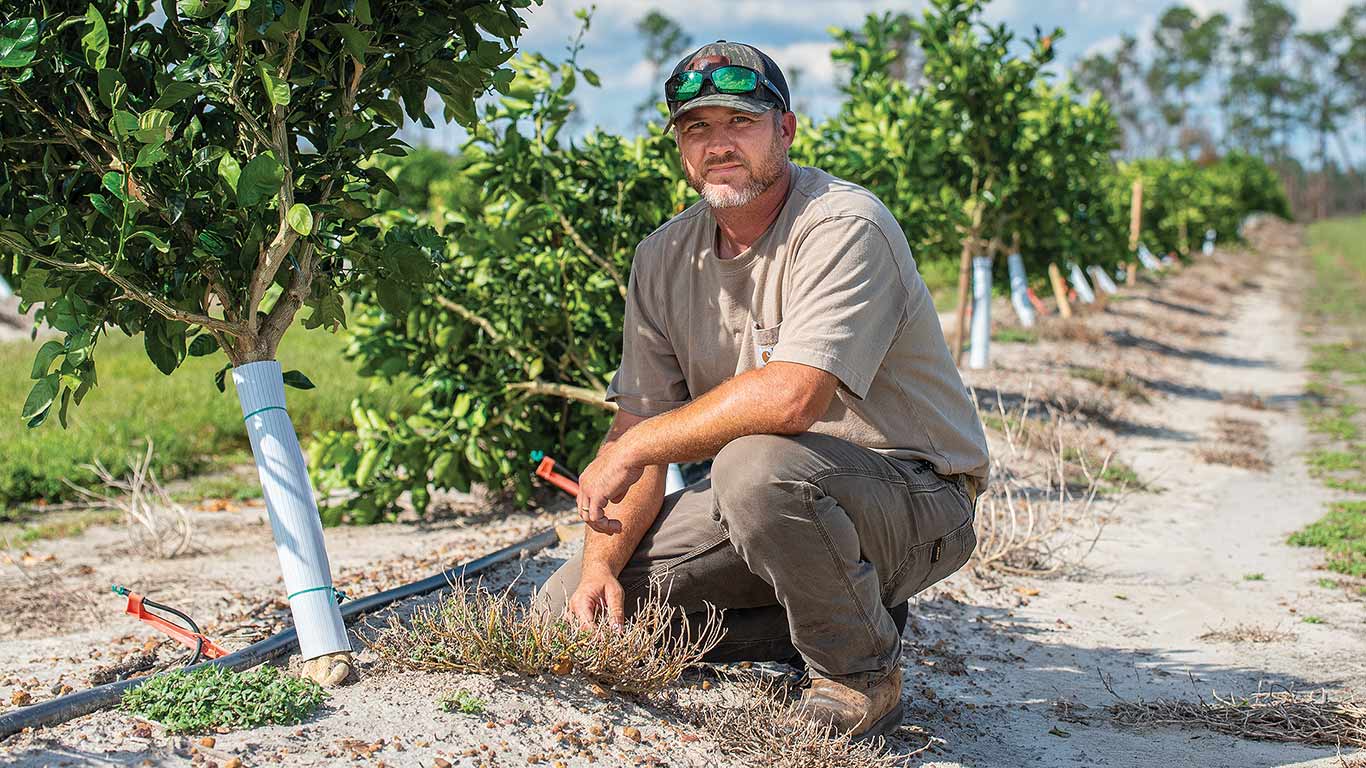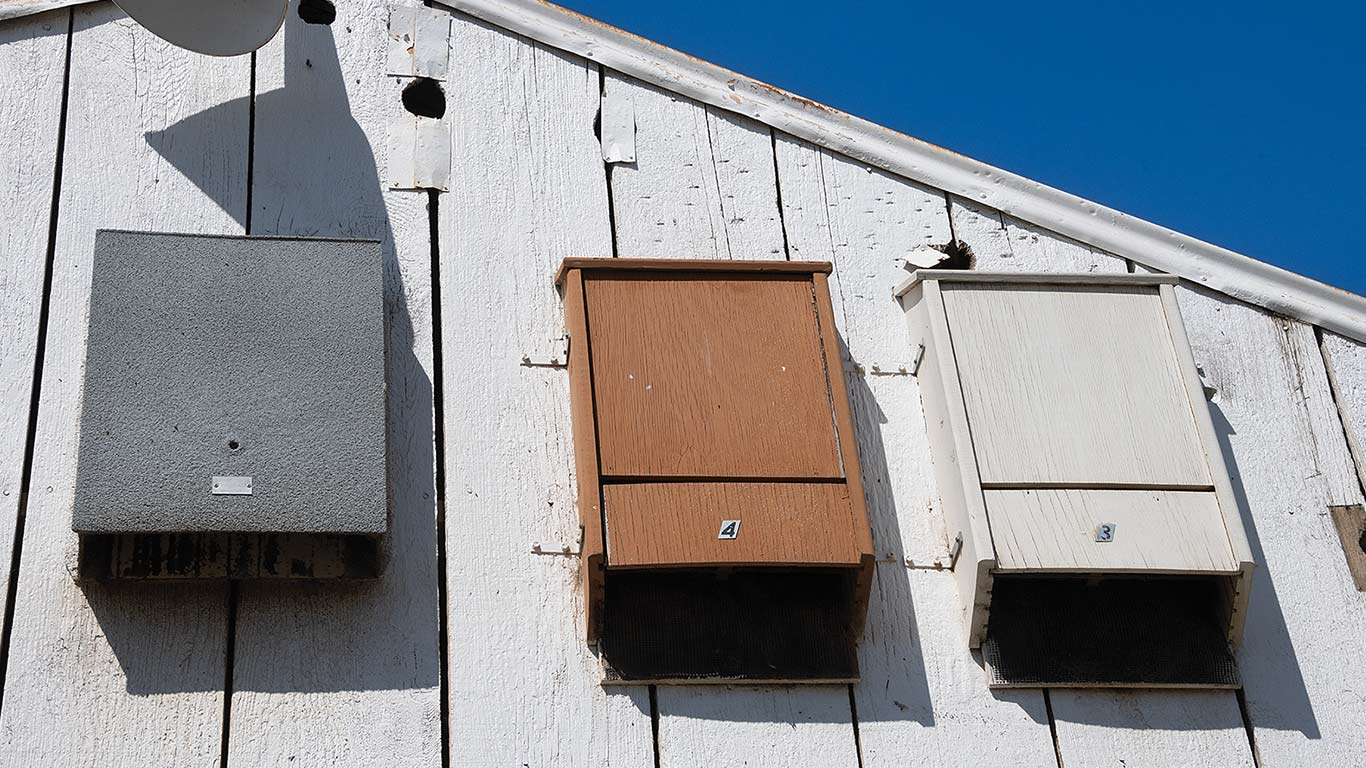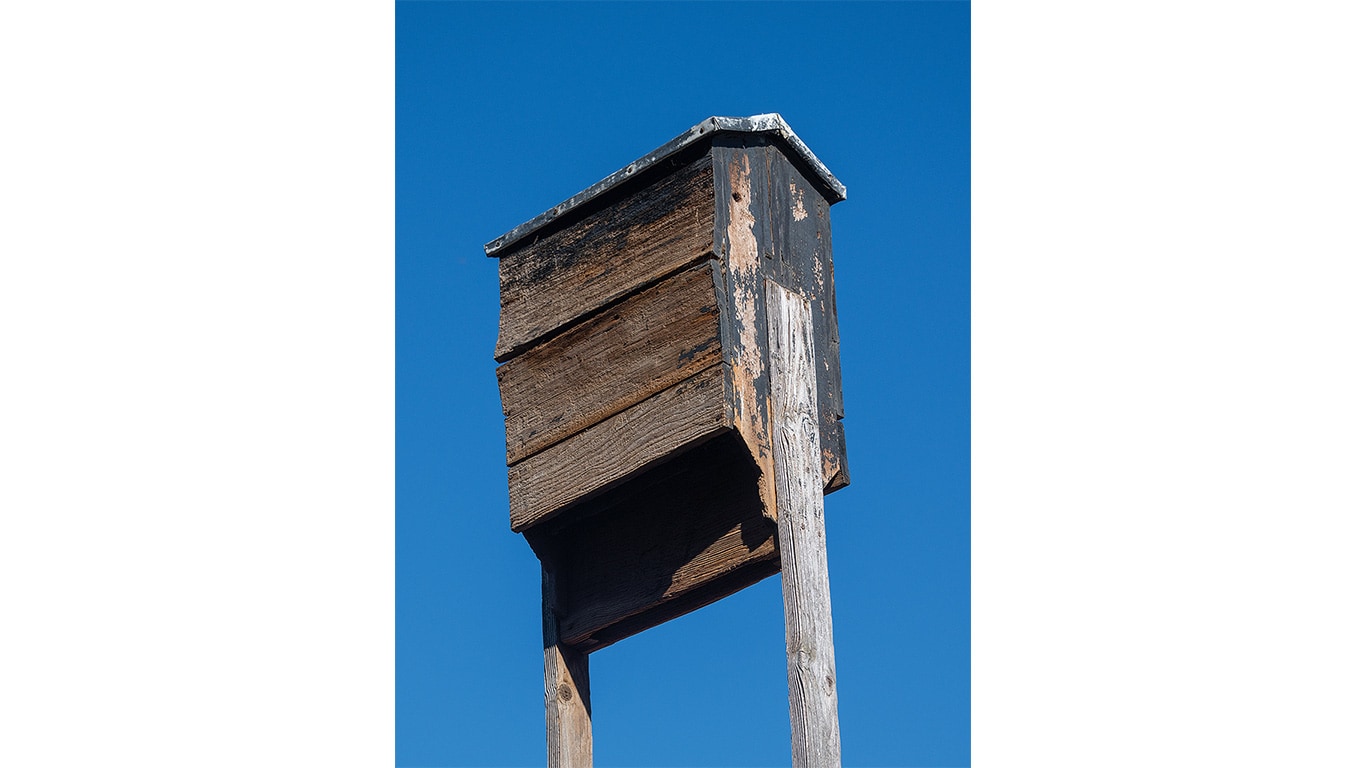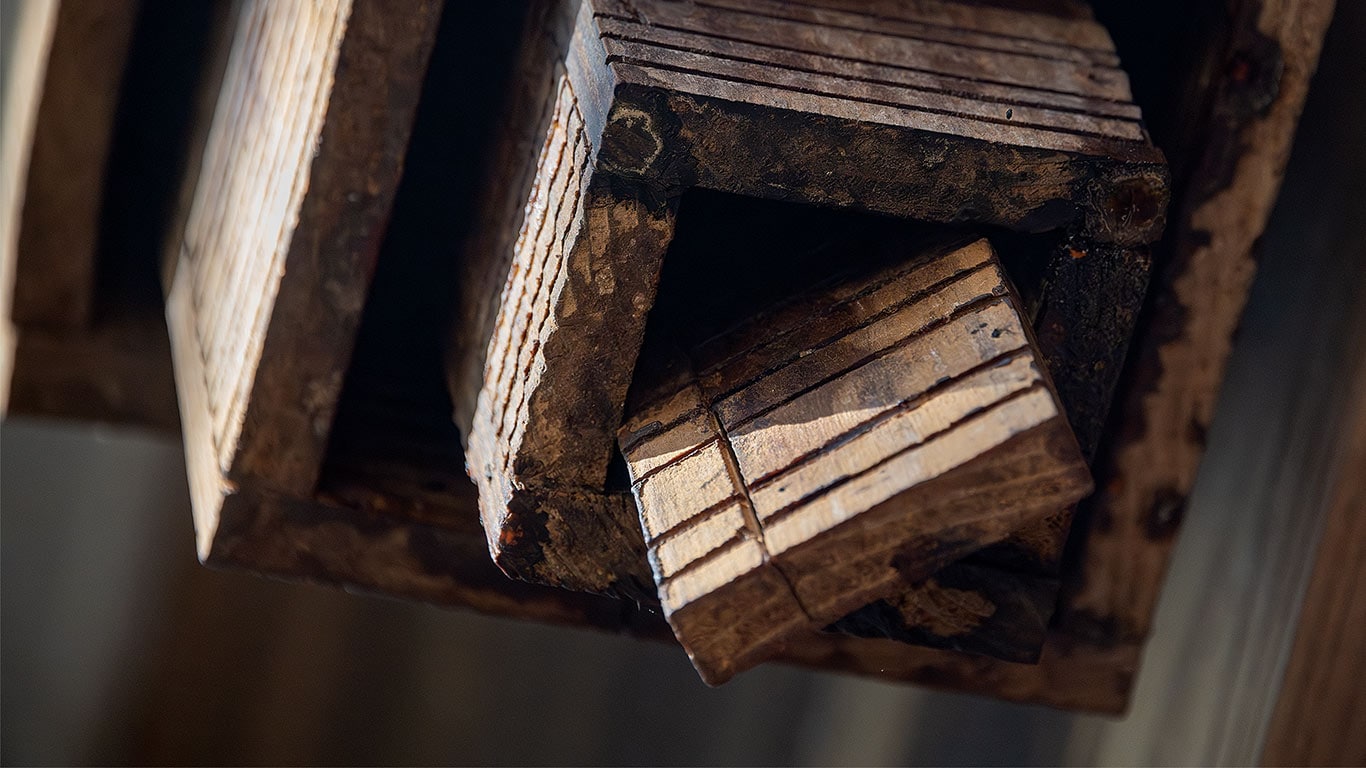
Bats, like this Townsend's big-eared bat, drink on the wing. At least 10 feet of unobstructed water surfaces are best. (Photo credit: ©MerlinTuttle.org)
Rural Living, Education September 01, 2025
Going Bats!
Among nature's most misunderstood creatures.
by Steve Werblow
Among nature's most misunderstood creatures, bats are amazing fliers, caring mothers, and a remarkable ally to farmers and gardeners.
Swooping, cornering, and scooping up flying insects in the air, bats eat mosquitoes, midges, thrips, whiteflies, beetles, and a wide range of moths, including crop pests like cutworms and corn earworms.
A single bat can consume two-thirds of its body weight in insects every night. A study of a colony of big brown bats estimated that the community consumed 38,000 corn rootworm beetles, 16,000 June beetles, 19,000 stink bugs, and 50,000 leafhoppers in a single summer.
A study in south-central Texas calculated that bats provided pest control benefits of $741,000 per year to cotton growers in an 8-county area. Another research team tallied $3.7 billion worth of pest control nationwide from bats.
A bonus for fans of integrated pest management from Rachael Freeman Long, who studied bats as a University of California Extension agent: most beneficial insects fly by day, avoiding bat predation. Lacewings fly at night, expertly avoiding bats. The result, she points out, is that bats can help beneficials gain the upper hand on pests by eating more harmful insects.
Help. Bats need our help. According to Kathryn Slater at Bat Conservation International (BCI), 98% of bat species are losing habitat, and white nose syndrome has killed 90% of North America's long-eared, little brown, and tricolored bats since 2006, when the exotic fungus was introduced here.
"Whatever we can do to create habitat—take advantage of CRP [Conservation Reserve Program] or headlands, create hedgerows—that's what it's going to take to have bats in the future," says BCI's Mylea Bayless.
Bayless urges landowners to plant bat gardens, which use native plants—especially night-blooming flowers—to attract the insects bats eat. Hedgerows act as corridors for safe travel between fields.
Water is another vital need. Bats drink while flying, so they need unobstructed water surface. Ponds, canals, and streams are ideal, but even livestock tanks can work.
"Really small waterers, like the little oval tanks, probably aren't getting much use from bats, but once they get to be about 6 or 8 feet long or in diameter, they could be used by several species of bats," says Dan Taylor of BCI.
Keep tanks full to make it easy for bats to sweep across the surface for a drink, he suggests. Add wildlife escape ramps to troughs or tanks, he adds.
Though some species of bats hunt insects near lighting fixtures, many avoid light. Bayless recommends following Dark Sky lighting protocols.
Above. Bat houses can take many forms. Rachel Freeman Long of University of California Extension says orienting bat houses for morning sun and afternoon shade is key. Rachael Freeman Long studied bats on farms during her career as an Extension agent. Bat boxes must be taller than hawks; otherwise, they can sit on the top and grab bats exiting the house. This "bat condo" is as beautiful to people as it is to bats. Hedgerows are great travel corridors for bats as well as other wildlife.
Bat boxes can help make up for lost habitat. Advice and plans for bat boxes are available online at BCI's batcon.org and at merlintuttle.org. Bayless offers a few tips, including making sure the box is at least 24 inches tall and 16 inches wide, caulked well to prevent drafts and keep heat inside. The more chambers the better, Bayless adds—bats like snug spaces, and wasps tend to move in when boards are more than about an inch apart.
Long points out that the right location is the key to success. Height is an important factor.
Bats swoop in and out of their houses from below, she notes, so a bat house should be 10 to 12 feet off the ground. Trees are highways for bat-eating predators like raptors, cats, raccoons, and snakes, so the side of a building or a freestanding pole is best. Leave 20 to 30 feet from the nearest tree to provide a zone of protection. Remember that wherever you have a bat house, you'll have guano and urine, so you'll probably want to avoid your front porch or patio. And think about temperature.
"Bats are mammals, just like us," says Long. "All of us love the morning sun, and when it gets hot, they love the shade. So put the bat house on the east side or even the north side of a building so they get about 6 hours of morning sun in the summertime."
Where nights are cool, a building provides thermal mass that keeps colonies warm. In the South, where nights are hot, lighter-colored houses on poles can keep bats cooler.
Safety. Some bats contract rabies, so if you're inviting bats to your homestead, vaccinate all your pets and even feral barn cats. Rabid bats fall to the ground, where they can come into contact with curious animals or children, Long says.
If you must exclude bats from an attic, wait until fall, when pups can fly with their mothers, says Long. Hang a foot-long sleeve of lightweight fabric off the bats' exit point—they can climb out, but can't go back in. When they're all out, seal the hole or crack to prevent returns.
And while you're at it, take a moment to marvel at these remarkable fliers. ‡
Read More

AGRICULTURE, FARM OPERATION
A Lesson in Resilience
A Kansas farm endures despite life-altering tragedy.

AGRICULTURE, EDUCATION
Safeguarding Your Rural Dream
Prepare before the power goes out.






